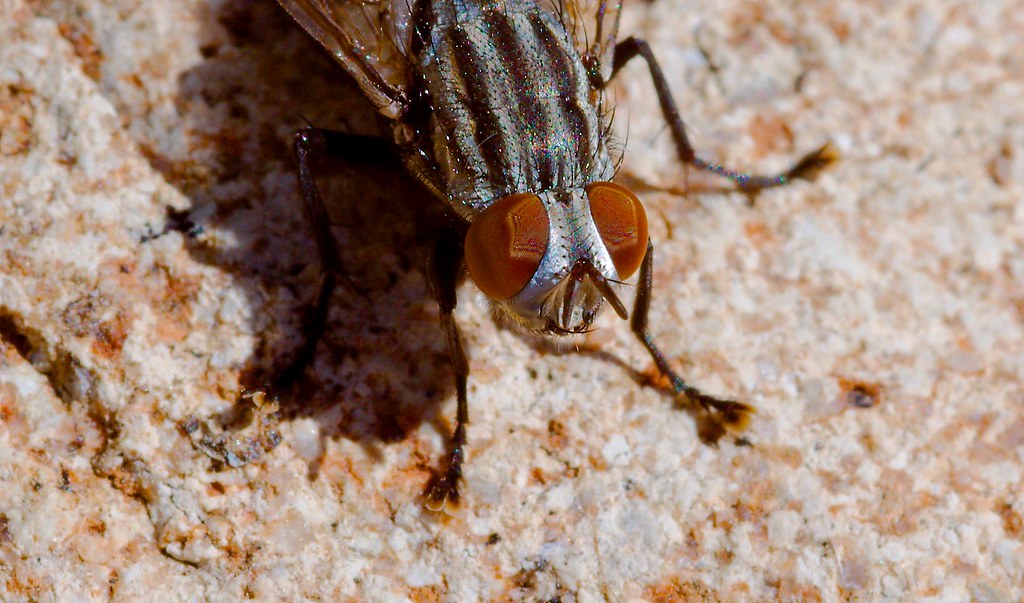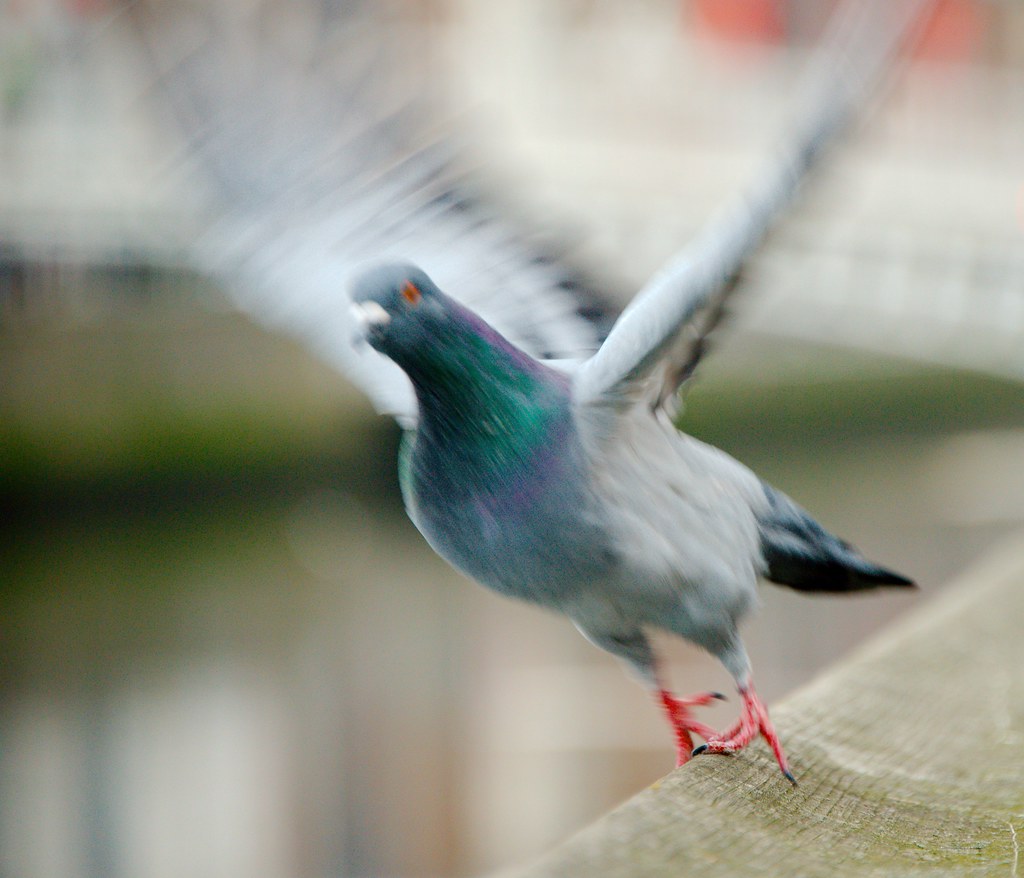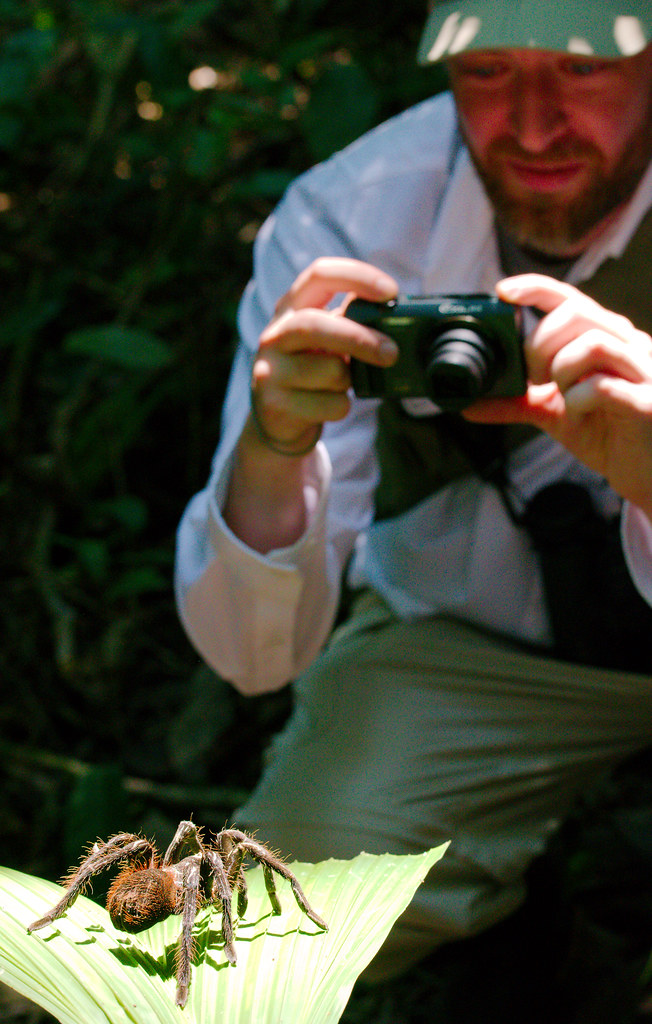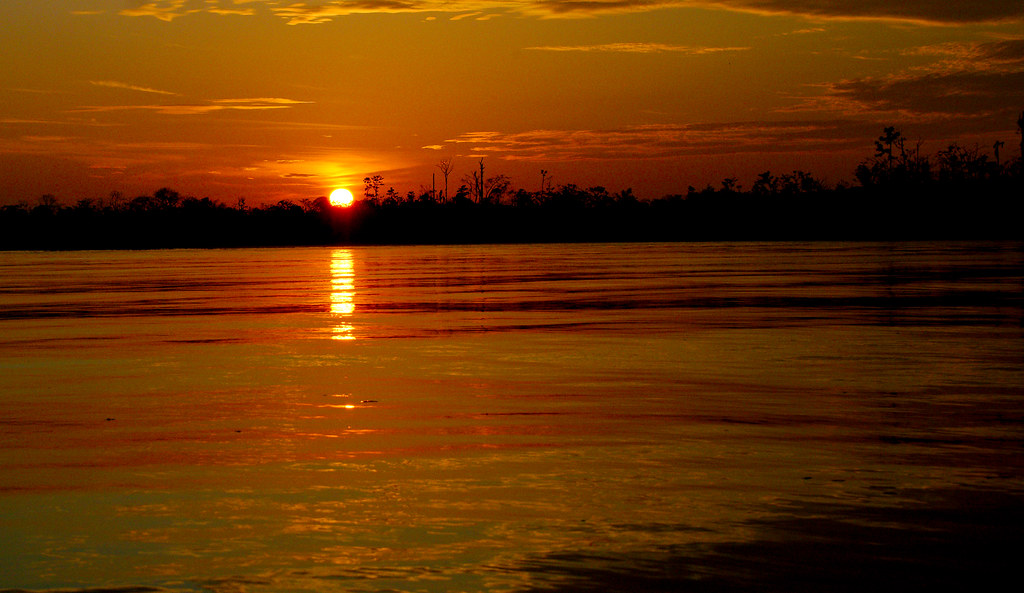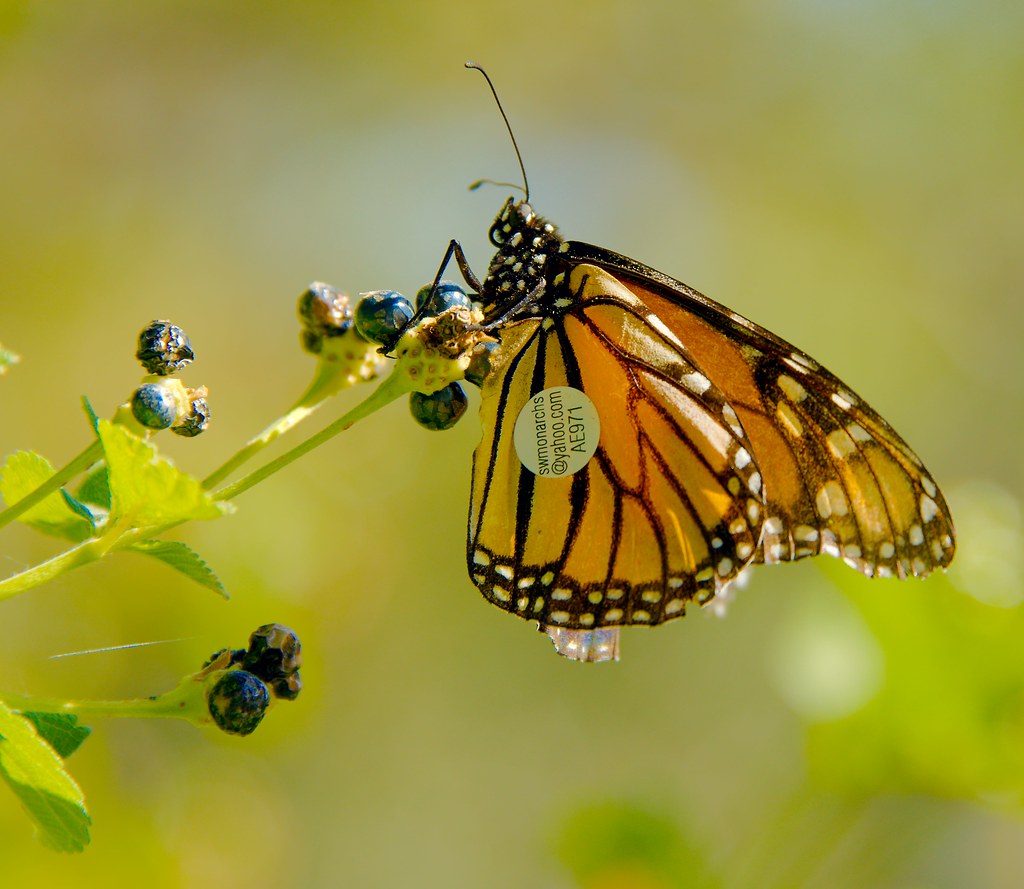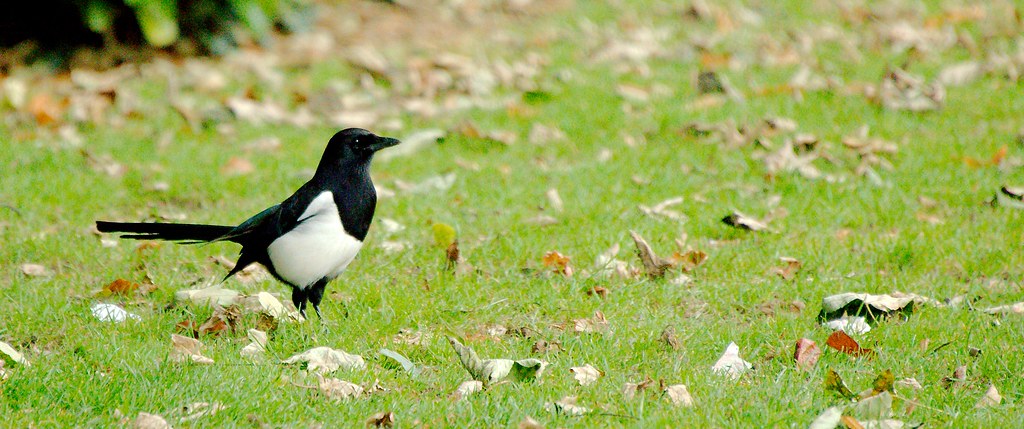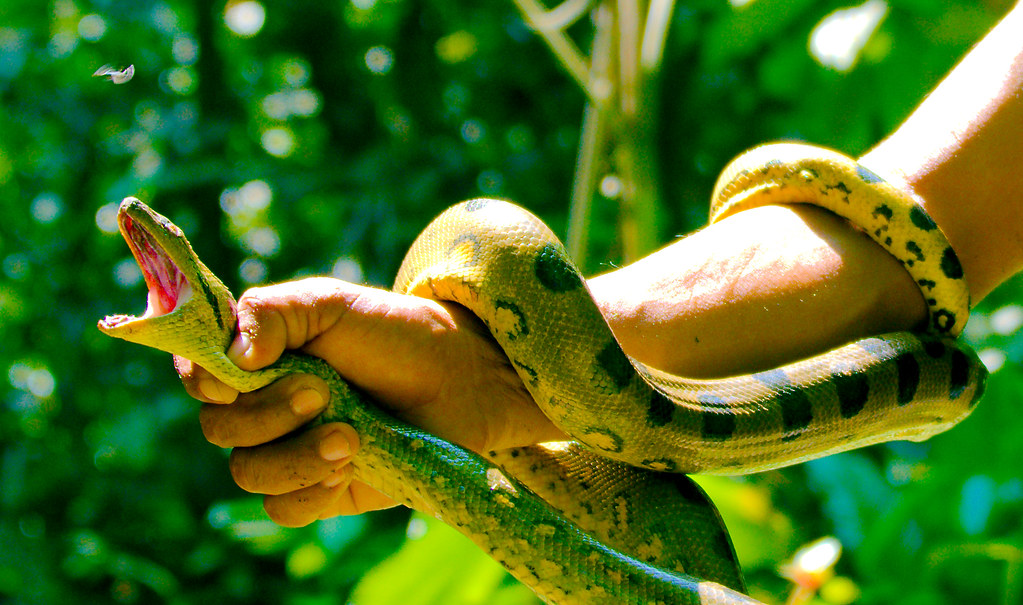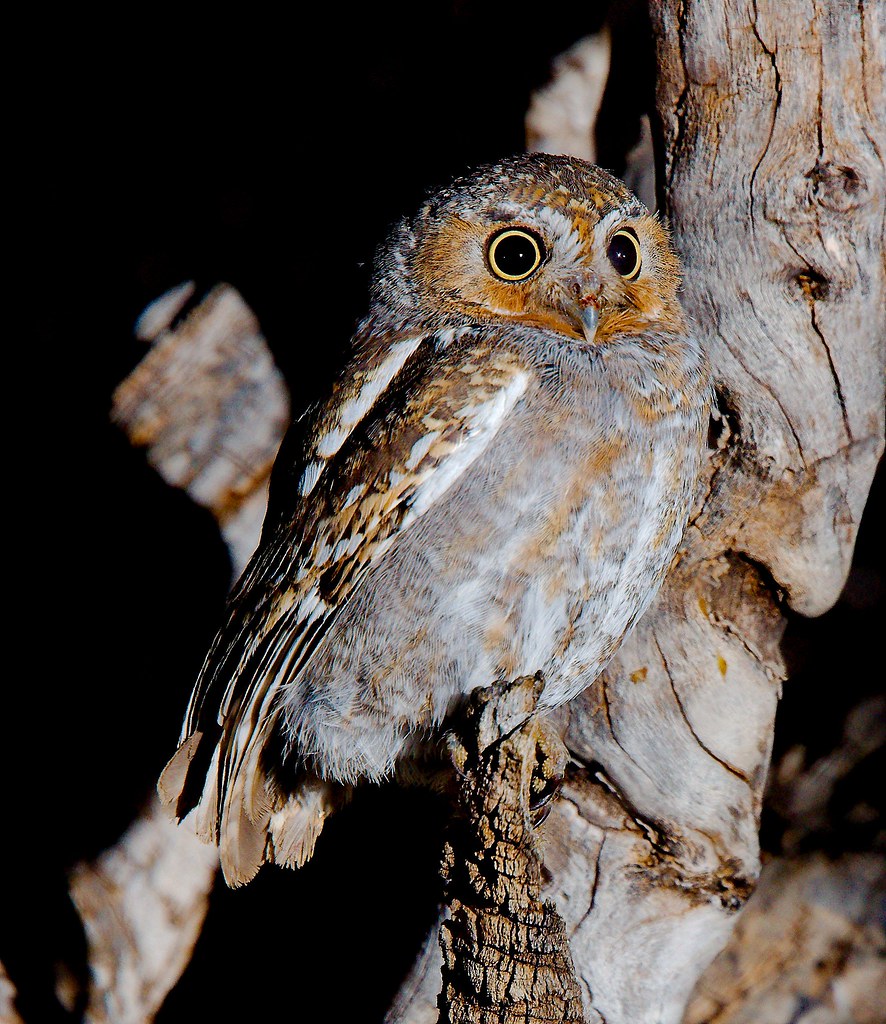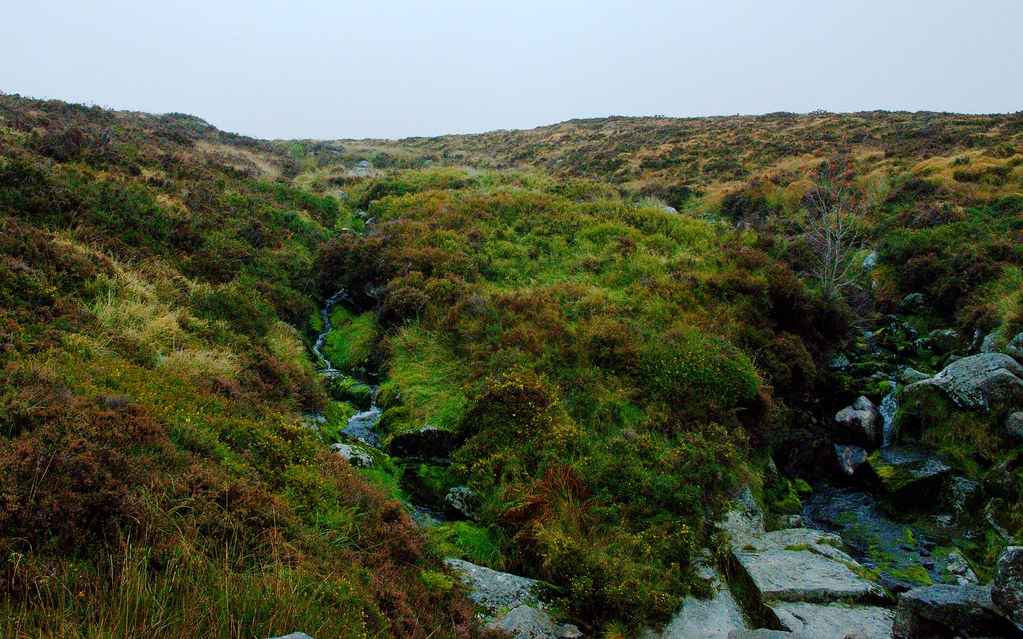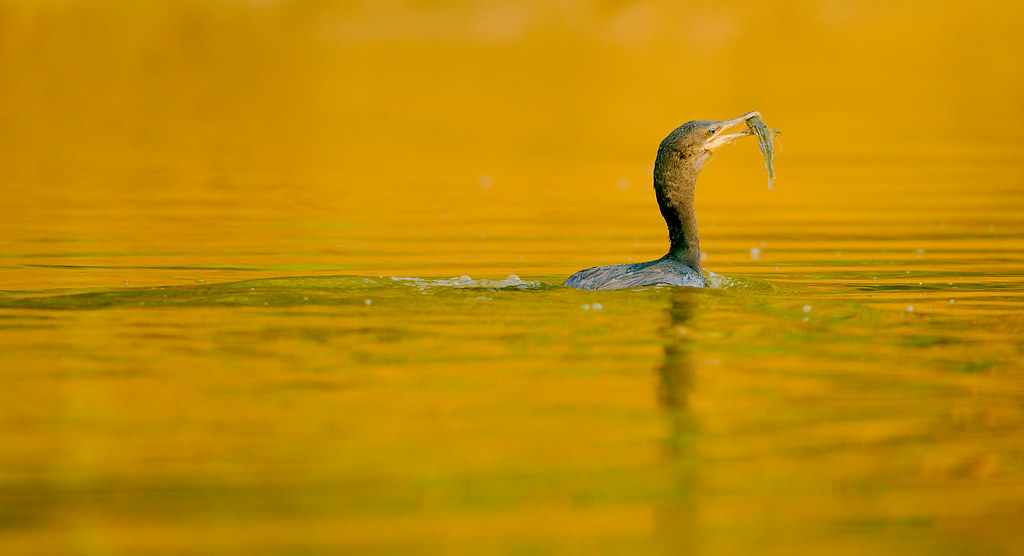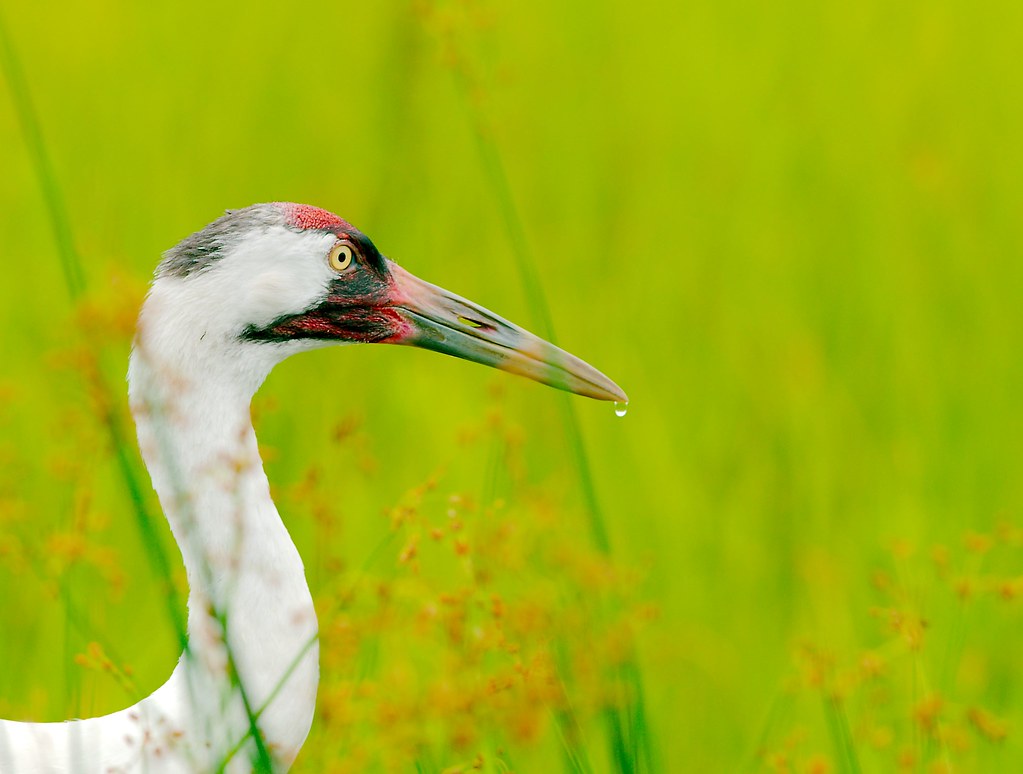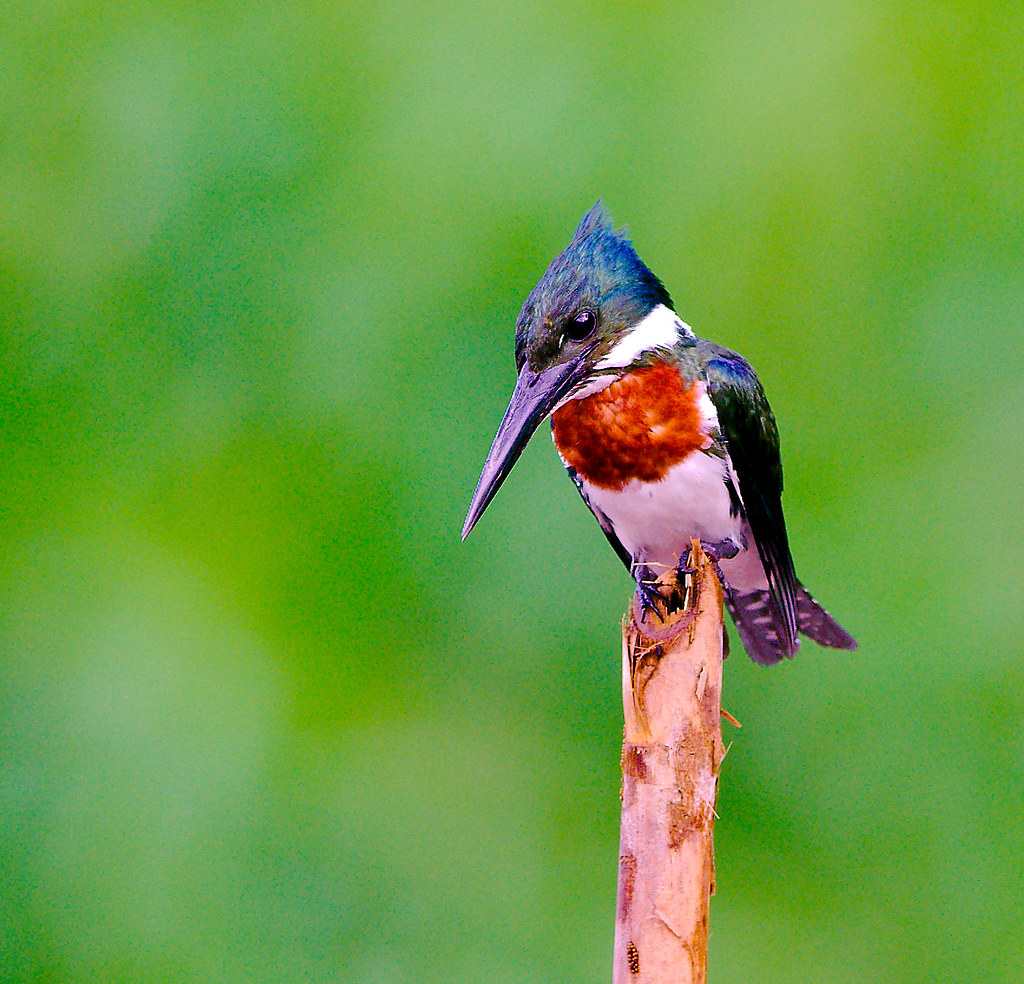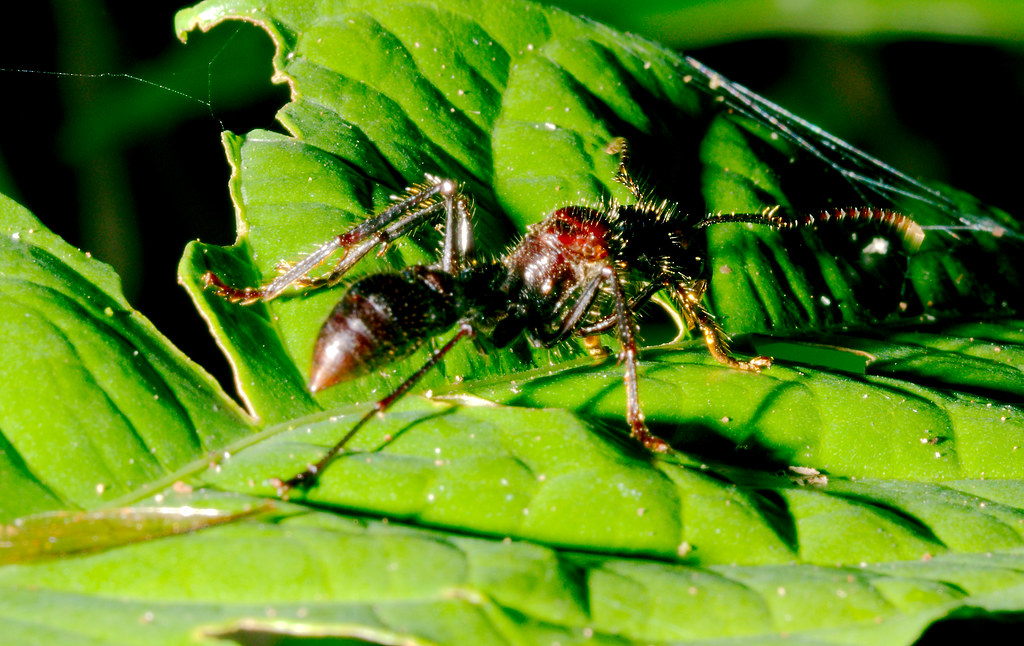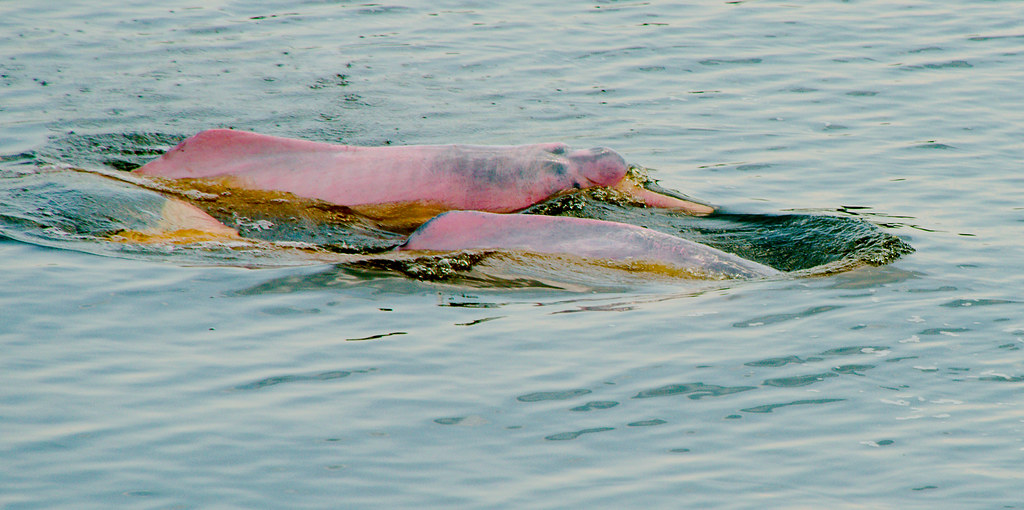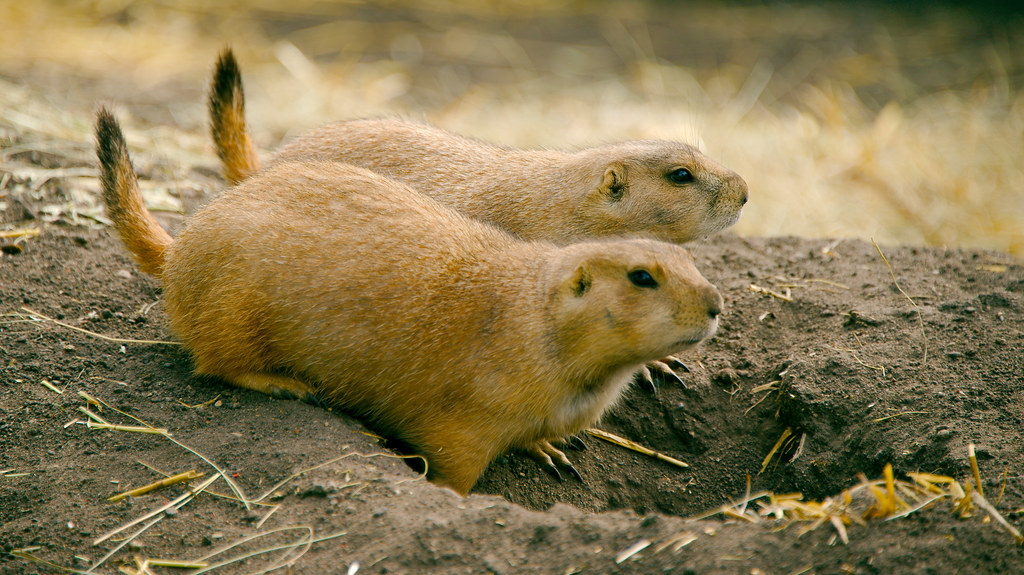Flies sure have a lot of bonus parts.
Images
Pigeon
Peru 2015 – Tarantula and Brother
Robin … the real one
Peru 2015 – Sunset
Monarch tag
Magpie
Peru 2015 – Snake
In order to see the animals, their process is to hire locals to bring the animals to us as we walked through the jungle. This approach puts money into the local economy, teaches locals to better appreciate their natural resources, and speeds up the process. It does not, however, create a lot of good photo opportunities.
Elf Owl (Micrathene whitneyi)
It is difficult to get photos of the elf owl, because the museum is mostly open during the day, and elf owls are mostly active at night. I really lucked out when I went last time because there was a special after-hours event. It was still hard to focus, but I finally got it working and, after a decade, was able to get a photo of the lightest owl (and one of three smallest) in the world.
Ireland – Mountain Peats
On my first full day in Ireland, I miscalculated the timing (time zones suck) and went out on a countryside tour. While I feel bad about how long it took and how I kept my friends waiting for me to return, I got to see so many neat things.
This is a photo of a peat bog … that’s on top of a mountain (or what passes for a mountain outside of Dublin). It’s basically 3-6 meters of peat that just absorbs the rain and slowly releases it like a sponge throughout the day. It’s the Irish equivalent of the icecap, except that like everything in Ireland, it’s green.
Peru 2015 – Parrot
Parrots were very interesting birds to see in the wild, most of them forming large flocks that really liked these plants that made those little edible pods. Living in the US, most of the big flocks of birds that we see are sparrows or pigeons, and neither of those form the sorts of massive flocks that parrots do. To do see a huge flock like that, that is brightly coloured, and making all sorts of tweeting noises reminds one of when Twitter gets into a photo fight.
Whooping Crane (Grus americana)
The crane foundation is responsible for much of the whooping crane rescue. In addition to the two they have on display, they also have a flock elsewhere that they are breeding to save the species. In 1941, we were down to 23 individuals. As of a few years ago, there were more than 600, with over 400 in the wild, relegating the group at the foundation an emergency backup group.
The concept of emergency backup groups may sound weird when it comes to animals, but keep in mind that birds of a feather flock together and, if they flock into a storm, they could all be wiped out.
It’s not just birds either. In May, 134,000 Saiga antelopes died over two weeks, halving the global population. Entire herds, just dropped dead. Whatever swept through had a 100% fatality rate. Since this species suffers periodic die-offs, several in the 1980’s, and one per year since 2010, there is some concern that the species may not survive another one. Think of everyone you know. Go down the list and imagine every other one of them suddenly dead. That’s rapid-extinction in action. That’s what’s happening today to other species.
An emergency backup group, in captivity somewhere, would help to shelter against pathogens or ruminal tympany (common causes of such die offs), and allow the species to regrow over time once the land has been determined safe for reintroduction.
Peru 2015 – Cormorant
Whooping Crane (Grus americana)
Peru 2015 – Kingfisher
Whooping Crane (Grus americana)
Peru 2015 – Bullet Ant
These ants are about an inch long and have the worst bite in the world. They say that it feels like being hit by a bullet and that there’s nothing you can do to stop the pain for up to an hour.
This implies that there are enough people in Peru that have both been shot and bit by this ant, to provide evidence for this story.
Sounds like an unlucky place to live, actually.
Grey Crowned Crane (Balearica regulorum)
Peru 2015 – Dolphins
This was the best shot I got of the dolphins. I spent a *lot* of time trying to get a good shot and, along the way, learned a lot about auto-focus modes and ways to speed up the camera. I took probably a thousand shots of the water and maybe 500 shots of dolphins in the water, and maybe 10 that are decent.
The problem is that the water is opaque and the dolphins don’t play with the wake like they do in the ocean. So you don’t know where they are until they’ve come up and are on the way down. If you’re lucky, you get one that repeats itself so you can get a good shot on the second go, but I was not so fortunate. I’m just glad that his show shows the beak and the pink colour. Most of the rest I got were of the younger grey dolphins.
